While we have provided a lot of information about the current work in the wood and why it is being done, there are still those who are unconvinced, or are at least unhappy about it. In this article I’m trying to address some of the points raised in feedback to the various posts on the subject. These are my personal opinions, although I hope my FOW colleagues would broadly agree.
OK, here goes…
“It would have been better to leave it as the lovely place it once was”
Before the purchase of the wood by Warwick District Council in 2008 it was private land, but many of us walked there anyway as the owner seemingly had lost interest in the wood and turned a blind eye to visitors. It was indeed a lovely quiet place to walk, but the planting of mainly conifers was intended for harvesting and not for longevity. Neglect showed, with crowded, fallen and diseased trees. Not much grew in some of the darkest places except fungi, although as a bit of a foraging mycologist I personally enjoyed this, and I have to admit I do miss it.
The sale of the wood changed all that irrevocably. Its most likely fate was to be bought for commercial purposes, stripped and replanted. And no more visitors (but then who would want to?). Wanting the wood to stay as it was is like saying that it would have been better that COVID-19 had never happened. The fact is that it did, and we have (had) to deal with it. The purchase of the wood by WDC – which brought FOW into being to campaign for this – was a reprieve for the wood and realistically the best outcome possible.
“Friends of Oakley Wood have spoiled the wood by attracting more people”
It’s gratifying that people think we are the most effective mouthpiece for getting people to visit the wood. That is what we’re trying to do; following our campaign to save the wood for the public, we turned our attention to encouraging people to use it. It’s important that people appreciate that this is an asset that Warwick District Council paid public money for, and it’s conceivable (but unlikely I hope) that they could consider selling the wood if they thought it was serving no community purpose, and then we would be back to 2008 again.
Certainly the increased footfall in the wood has turned some paths into quagmires in places. Widening of the paths should help them to dry out, but there are definitely places which really do need proper maintenance to prevent them becoming impassable in the winter. The public needs to make their feelings known by petitioning the council () to get something done, or letting us know so that we can petition the Council on their behalf.
“It’s just a shame that we now have to wait a considerable amount of time time until we will to be able to enjoy this once beautiful blue bell filled wood with the piece and tranquillity it once offered”
True, although I’m not sure about “considerable” (see later). But there is an element of selfishness in this sentiment. Surely we should be able to put up with the downsides of management now so that others can enjoy the benefits in the future. “Short-termism” is a problem in many walks of life: politicians typically can’t see beyond the next election, ranchers hack down the Amazon jungle to make a quick buck. Nature would be in a bad place if no-one was prepared to invest in its future, and put up with a bit of pain in the process.
“Cutting down the trees means we can now hear the roads”
Traffic noise varies as it is affected by the wind direction, but has always been intrusive. I know this particularly because of the dawn chorus recordings I’ve made. The amount of background noise from the traffic, even at 5:00 in the morning, is surprising (fortunately I’ve an audio editor that can remove most of it). I don’t believe much would have changed in this respect if the wood aged in the condition it was. The growth of the pines that formed the great majority of the trees would not have done much to help block the noise as they have little growth at ground level. What it needs is growth of an understory to absorb the sound lower down where people and animals are. The management of the wood is intended to do this. In the short term it may well be worse. But again, it’s an investment for better.
“This was once a beautiful bluebell wood…”
There I can agree – the carpets of bluebells have largely disappeared under the explosive growth of bracken and brambles that has happened since thinning let the light in. It’s a shame, but I can only refer to the reality of what I said earlier: it was always likely to be bad news for the bluebells one way or the other after the wood was put up for sale. The good news is that they are still there but hidden, as I discovered when doing ride-side clearing at the end of 2019. Hopefully as the wood ages and the brambles and bracken become less pervasive they will re-emerge. Bluebells can still be seen in places, early in their season before the growth of bracken engulfs them, and before them wood anemones, celandines, stitchwort and violets are there to be enjoyed, especially on the south side of the wood which remains relatively undisturbed.
So how long does it take the wood to recover?
This is a question we’d all like to know the answer to, and surprisingly perhaps not as long as you’d think.
Photography is one of my hobbies, and I’ve taken a lot of photographs in the wood over the years. It’s easy not to notice gradual change if you’re just walking in the wood, but photographs tell the full story. It’s obvious but still worth pointing out that things always look worse in the winter, when there’s no ground cover or leaves on the trees, so the effects of the current thinning will be softened if not completely hidden by summer growth.
Here are some of the comparison photos I took after the 2014 thinning.
Notice that there is only 6 months between the last pair of photos. That’s not very long at all.
Finally this is a photo of the south ride taken last month, looking lovely:
which five years ago looked much like this:
I hope we can agree that this is a transformation worth waiting for.
So, if you think things are on the right track, why not say so by commenting with a few words of support? At the moment the only voices are negative ones. I’d like to think that most people feel more positive. If you do, say so!

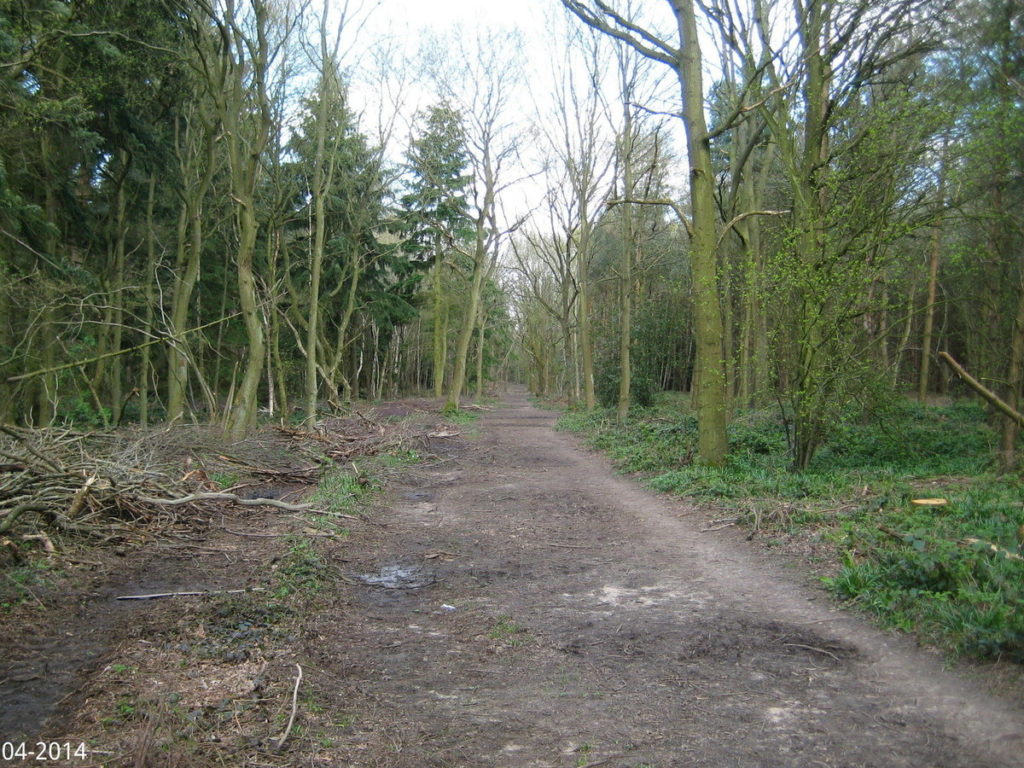
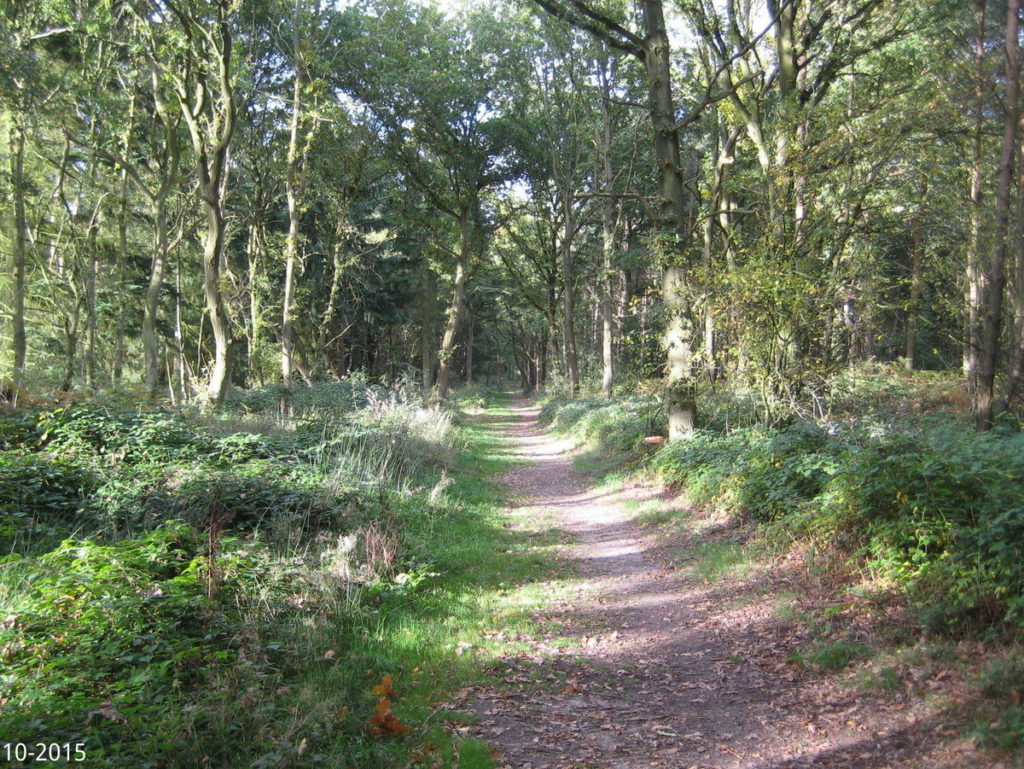
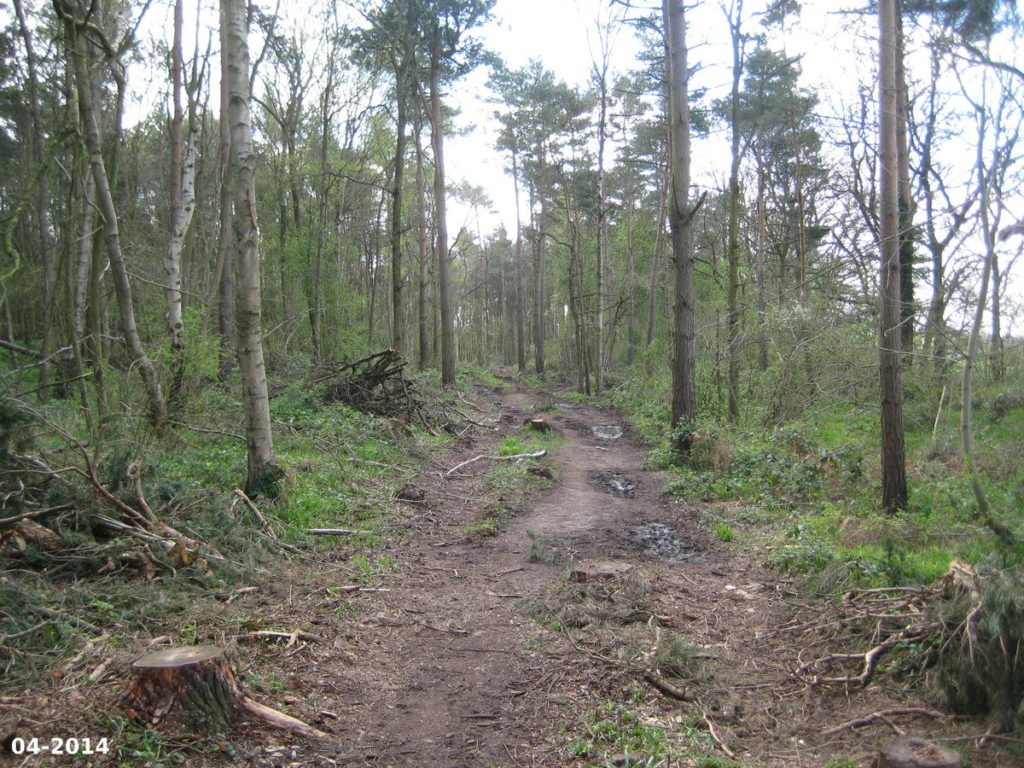
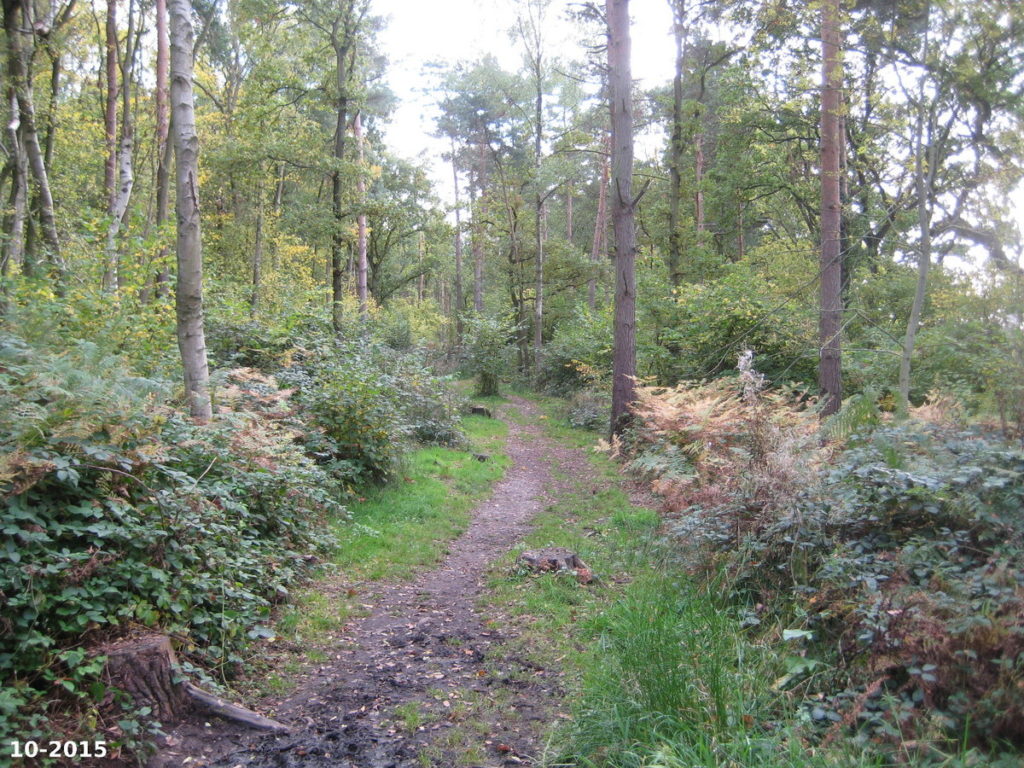
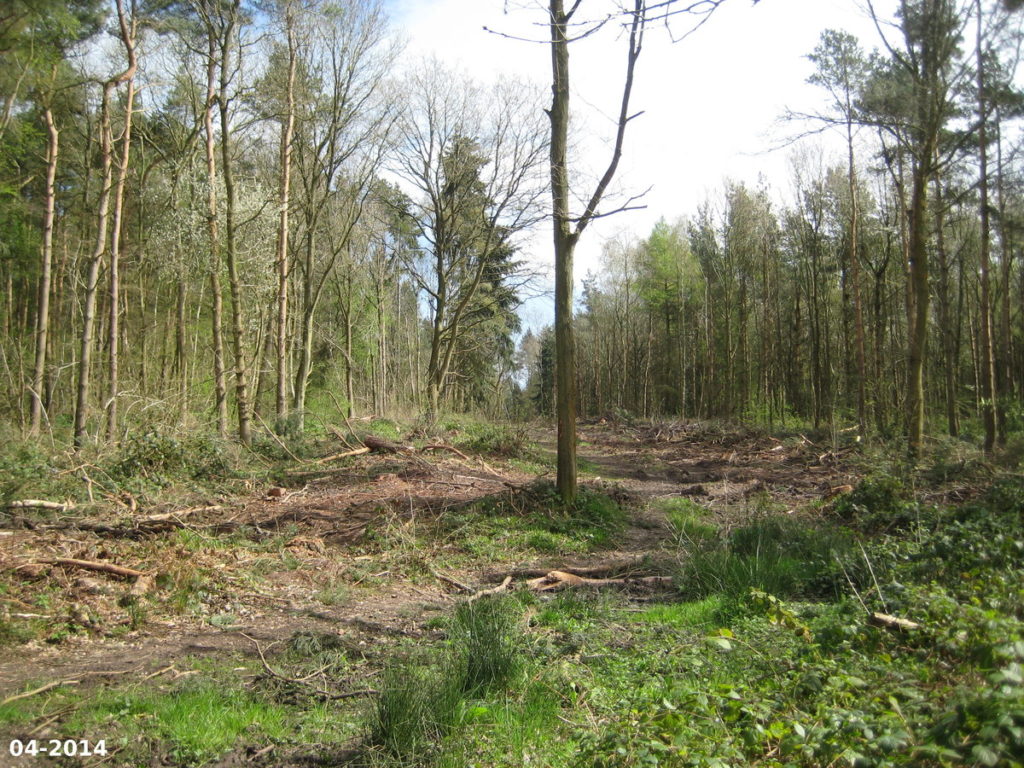
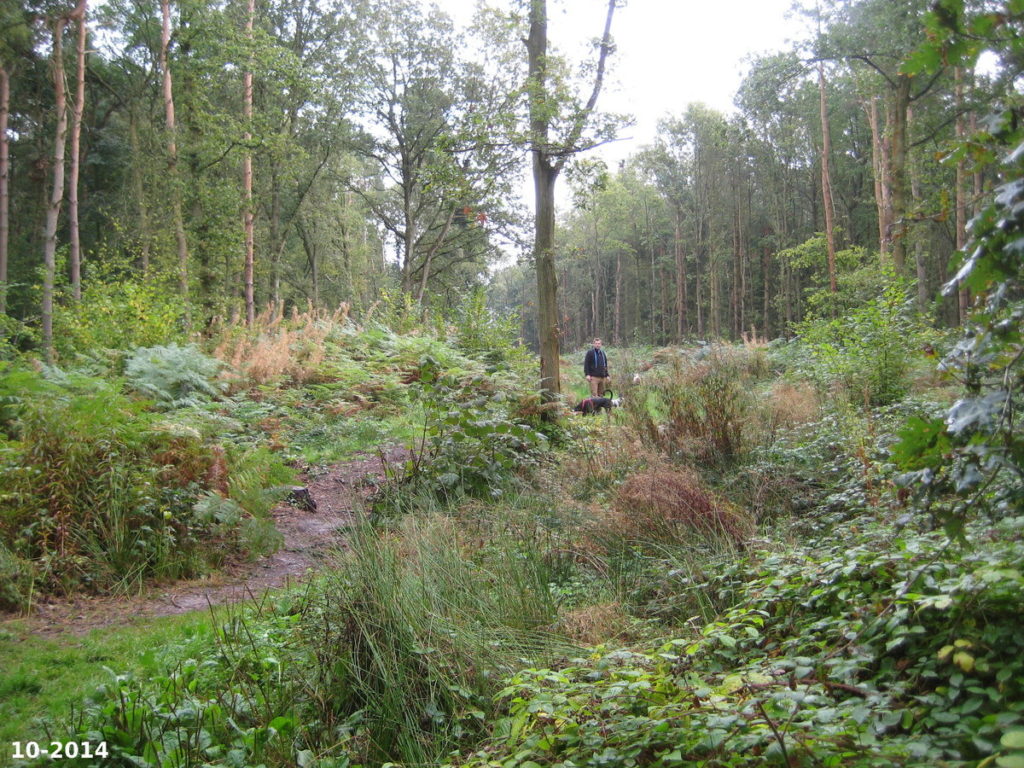
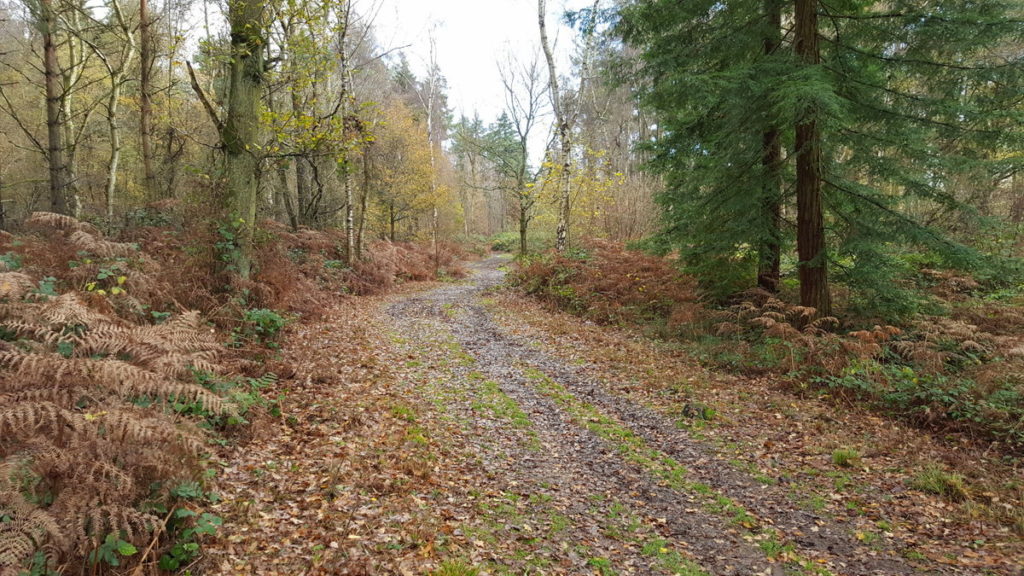
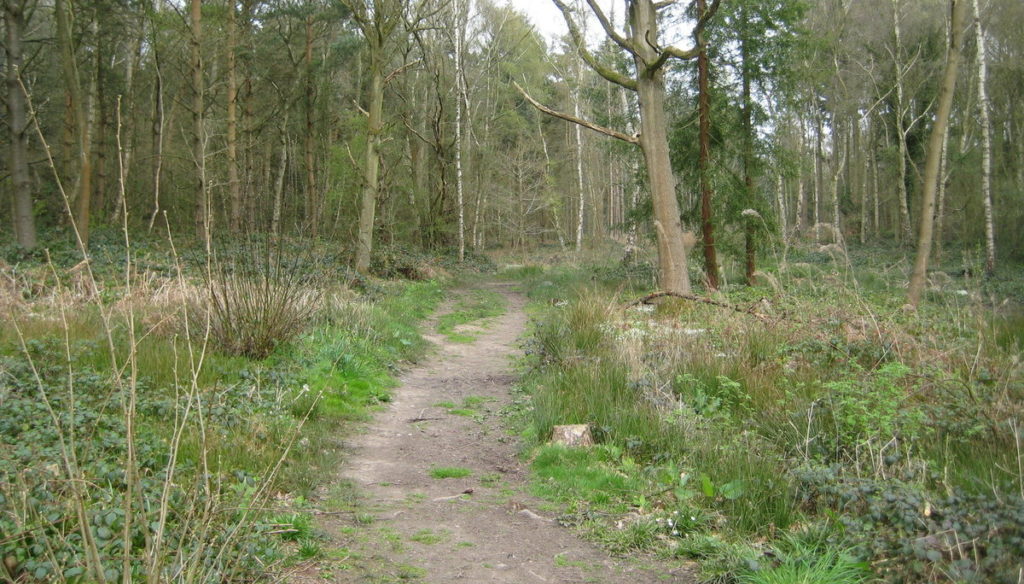
Have they finished? There’s no sign of any machinery, not even the digger that’s supposed to sort the paths out again, I’ve walked there twice today and spent most of the walks dragging branches to cover the muddy tracks
As a horticulturist I fully support the work being done. Woodland management is a very difficult and long term project but nature is amazing at bouncing back. The areas where the pines are dense are ‘dead’ areas as far as flora and fauna are concerned and the thinning will allow plants and wildlife to move in. Native trees support far more species than the pines and it will feel completely different by the summer. I look forward to seeing the changes it brings
Great article Chris .You have answered /made sense out of many of our queries.We only have to look back to the previous work done to see what a difference it made.We have to think of future generations and forgo 6 months of mess so that we can see differences that will benefit our children.We cannot afford to be selfish and should rely on experts to make the right decisions for our natural world at large.
Thank you Chris.
Your article is an important contribution to discussions about the wood.
It seems to me to be well balanced and fair. Woodland management always leads to controversy but as your pictures show what looks like devastation soon returns to a more natural appearance. The bluebell bulbs are just waiting for conditions to their liking and they will flower again.
Thank you Chris for a most informative article.
On an historic point, before Friends of OW there was a group of us campaigning as ‘Save Oakley Wood’ including a website, etc.
That initial campaigning paved the way for the WDC purchase & our understanding was that WDC insisted on a harvest of 2,500 tons of timber every other year to help fund the Wood.
Totally understandable if only those at the Council responsible were better at their job & put in requirements to reinstate some of the secondary paths as well.
Accessing these now is a very muddy affair walking across/through very deep ruts across these paths that should have been filled.
I am not suggesting that all ruts should be filled in, they provide excellent support for the wild life but just those that impair the actual primary & a selected number of secondary paths.
I have some knowledge of local authority contracting & quite simply, if a contract does not require detailed remedial action after the harvest – then it just will not happen!
So please stop being defensive about each harvest & please START to RECOGNISE the problem created by lack of essential path reinstatement.
See Latest post for an update on path maintenance. FYI WWT, who manage the forestry operations, know nothing about a biennial harvest of 2,500 tons of timber purely for funding purposes, and is not in their plans. As far as I understand, timber extraction is done solely on the basis of good management practice, although of course this timber is sold. I have been told that the money raised is ring-fenced for the benefit of Oakley Wood.